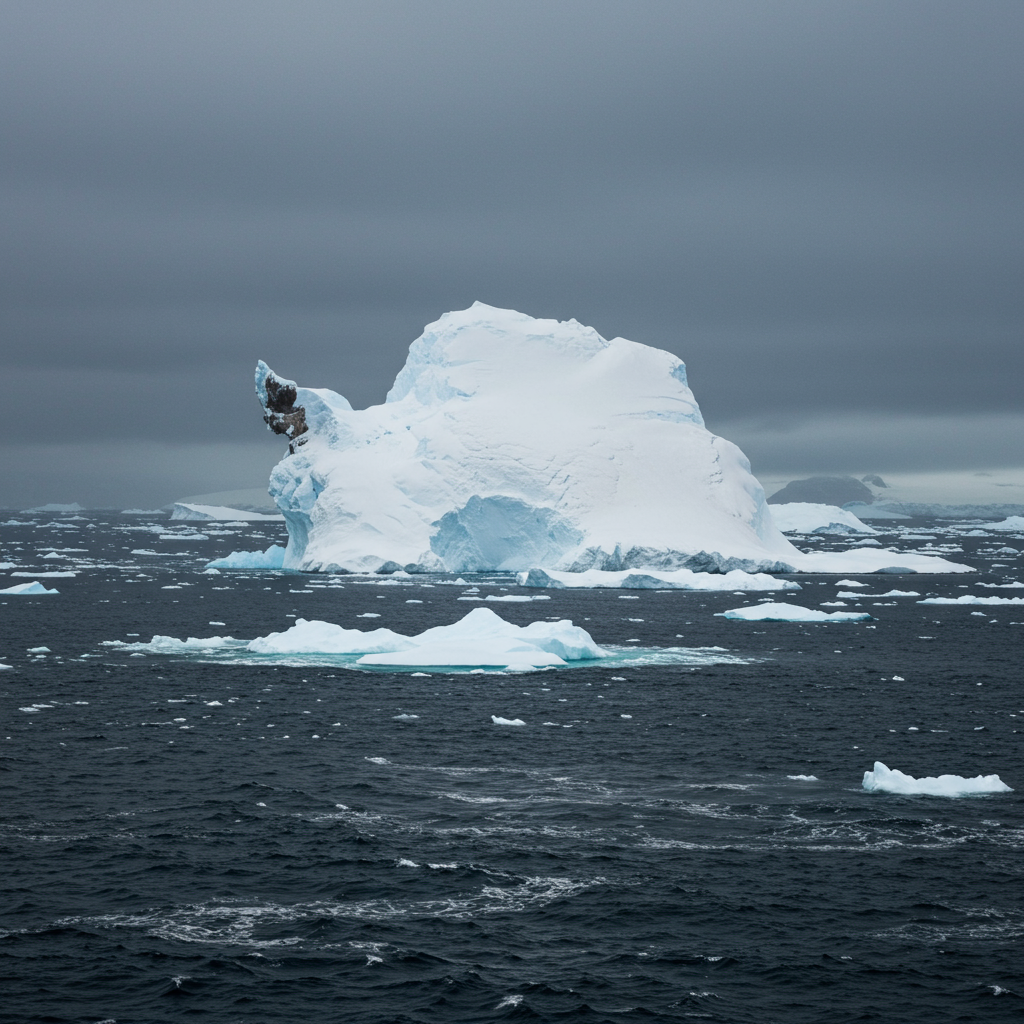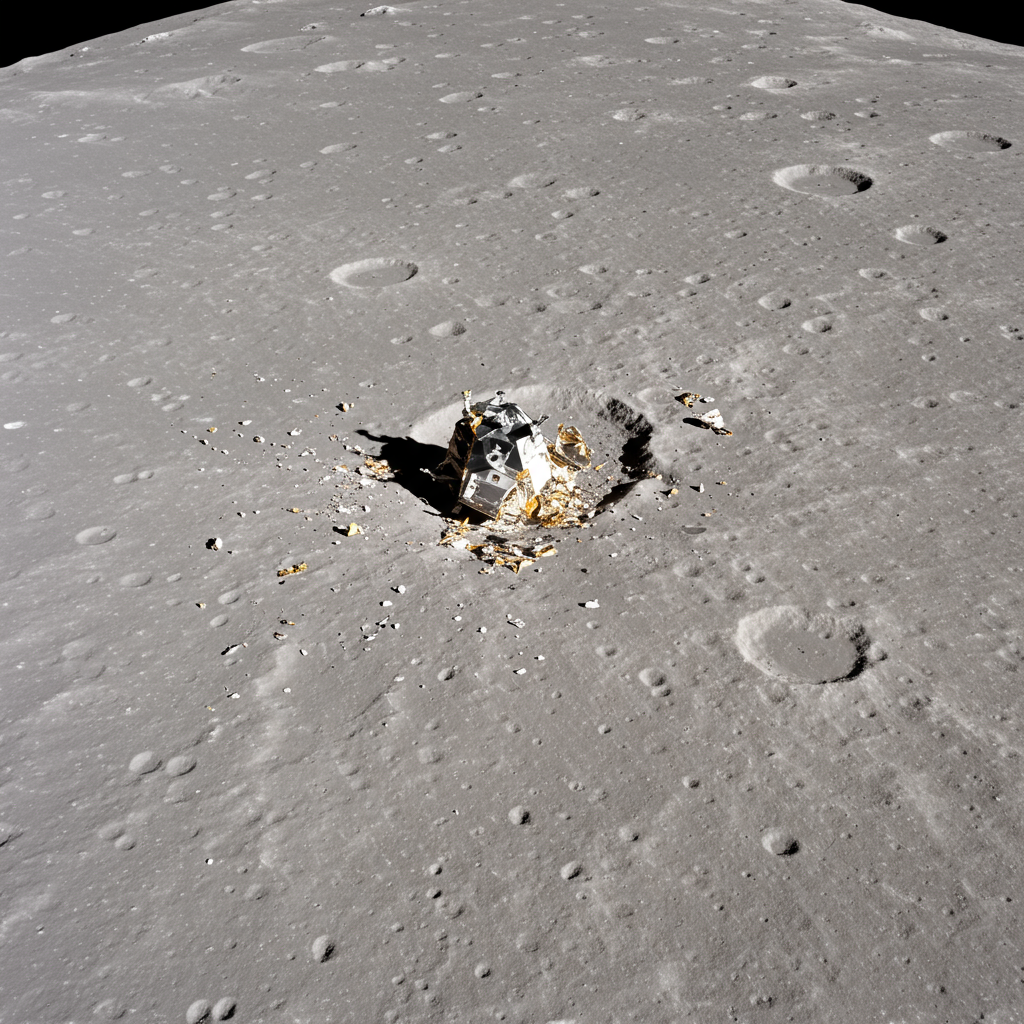The Southern ocean surrounding Antarctica is experiencing rapid, unexpected changes. Scientists have identified a critical “dangerous feedback loop” where increasing ocean saltiness is accelerating the dramatic decline of sea ice. This alarming shift, detailed in a new study, challenges previous understanding and carries significant global implications for climate and ecosystems. Understanding this dynamic is crucial as researchers work to predict future environmental shifts.
Antarctic Sea Ice Faces Record Losses
Antarctic sea ice has seen unprecedented changes in recent years. Since 2015, researchers have documented a steep and dramatic decline. This isn’t just a small reduction; the amount of sea ice lost is equivalent in size to Greenland. Scientists describe this as one of the largest environmental shifts observed anywhere on Earth in recent decades. These record lows have persisted, failing to recover to previous levels seen over the past 30 years.
Sea ice forms from frozen ocean water. It naturally expands in the winter and shrinks in the summer. The smallest extent typically occurs in late February or early March in the Southern Hemisphere. While sea ice melt is a known signal of global warming, the speed and nature of the current Antarctic decline have caught scientists by surprise. Multiple factors influence ice extent, including geography, winds, and air/ocean temperatures. However, a recently identified oceanic process appears to be playing a critical, unexpected role.
The Unexpected Role of Ocean Saltiness
For many decades, scientists believed the Southern Ocean’s surface waters were becoming less salty. This was thought to be due to increased snowfall and meltwater from ice sheets. Freshening creates a layer of less dense water near the surface. This layer acts like a cap, effectively trapping warmer, saltier water from the deep ocean below. Such layering, known as stratification, was expected to protect surface sea ice from melting from beneath.
However, new observations using satellite data and autonomous ocean floats reveal a sharp reversal since 2015. Instead of becoming fresher, the Southern Ocean surface south of 50° latitude has rapidly become saltier. This surge in salinity is a key, unexpected finding. It directly contradicts previous assumptions and climate model projections, which had anticipated a delayed decline in Antarctic sea ice partly due to surface freshening.
Unraveling the Dangerous Feedback Loop
The increase in surface saltiness is directly linked to the accelerating sea ice melt. Saltier surface water is denser than fresher water. This weakens the ocean’s natural layering or stratification. When stratification weakens, it becomes easier for warmer water from the deep ocean to rise towards the surface.
Scientists, including study lead author Alessandro Silvano of the University of Southampton, explain this mechanism creates a dangerous feedback loop. Warmer deep ocean water reaches the surface layer more easily. This heat then melts the sea ice from below. Less ice cover means the ocean absorbs more solar radiation, further warming the surface waters. This warming, coupled with the weakened stratification from increased salt, allows even more deep heat to reach the surface. The cycle is self-reinforcing: less ice leads to more heat, which leads to even less ice.
This newly identified feedback mechanism involving salt is proving to be a powerful driver of the rapid ice loss observed. It helps explain why the decline has been so swift and dramatic since 2015, outpacing previous expectations.
A Striking Indicator: The Maud Rise Polynya
Further evidence of the unusual conditions in the Southern Ocean comes from the re-emergence of the Maud Rise polynya. A polynya is simply an area of open water surrounded by sea ice. The Maud Rise polynya, located in the Weddell Sea, is a massive hole in the ice. In recent years, it has reappeared at a size nearly four times that of Wales.
The return of this specific polynya is highly significant. It hadn’t been seen on a large scale since the 1970s. Polynyas can form when atmospheric conditions push ice away or, crucially, when reduced ocean stratification allows warmer deep water to rise and melt the surface ice. The re-emergence of the Maud Rise polynya signals just how unusual and profound the current oceanographic shifts, particularly the weakening stratification driven by increased salinity, truly are. It’s a visible symptom of the hidden changes happening beneath the surface.
Global Consequences of Antarctic Sea Ice Loss
While located in a remote region, the changes in Antarctic sea ice have far-reaching, global implications. Antarctic sea ice acts as a crucial reflective shield. Its bright white surface reflects a large amount of sunlight back into space. This helps regulate the Earth’s temperature. As sea ice disappears, the darker ocean surface is exposed. The darker water absorbs more solar radiation, contributing to overall warming. This loss of reflectivity is a positive feedback loop that can accelerate global warming.
Beyond temperature regulation, changes in Antarctic sea ice can impact global ocean circulation. The formation and melting of sea ice influence the density and salinity of surface waters. These processes drive the formation of dense deep water masses. These masses sink and fuel global ocean currents. Disruption to these processes can alter ocean circulation patterns worldwide. This could affect the distribution of heat, nutrients, and marine life, and even influence global weather patterns and storm intensity.
Furthermore, the Southern Ocean is a vital buffer in the climate system. It absorbs large amounts of atmospheric carbon dioxide. Changes in stratification and circulation could potentially reduce its capacity to absorb CO2. This would leave more CO2 in the atmosphere, exacerbating the greenhouse effect.
Impact on Antarctic Wildlife
The loss of sea ice also has devastating consequences for Antarctic wildlife. Many iconic species rely heavily on sea ice for survival. Penguins, especially emperor penguins, use the ice as breeding grounds, nurseries, and platforms for hunting. Declining sea ice habitat is a direct threat to their populations. Some studies have projected “quasi-extinction” for several emperor penguin colonies in the coming decades if current trends continue. Seals and other marine life also depend on the ice cover. Shrinking habitats pose a significant risk to the entire Antarctic ecosystem.
Challenges for Scientific Prediction
The unexpected nature of the recent changes highlights limitations in current climate models. Scientists had largely anticipated eventual sea ice decline under global warming. However, the speed of the decline and the surprising shift towards increasing salinity were not fully predicted. This suggests that current scientific understanding may be insufficient to accurately forecast future changes in the ice-ocean system.
Co-author Alberto Naveira Garabato emphasizes the critical need for continuous monitoring. Detailed observation using satellite technology, autonomous ocean floats, and ship-based surveys is essential. These tools provide crucial data on temperature, salinity, and ice extent throughout the water column and across the vast Southern Ocean. Better data is needed to refine models and improve predictions about the future state of this critical polar region and its impact on the planet. Understanding the precise triggers that initiated the sudden salinity surge after 2015 also requires further investigation. Possible factors include shifts in wind patterns, changes in precipitation, or increased intrusion of warm deep water onto the continental shelf.
Frequently Asked Questions
What is the dangerous feedback loop found in Antarctic sea ice melt?
Scientists have discovered that the surface waters of the Southern Ocean are unexpectedly becoming saltier. This increased saltiness weakens the natural layering (stratification) of the ocean water. This allows warmer, deeper ocean water to rise more easily. This rising heat melts the surface sea ice from below. Less ice means more ocean heat absorption, which further weakens stratification and allows more deep heat to rise. This cycle, where less ice leads to more heat and even less ice, is the “dangerous feedback loop.”
How is the Maud Rise polynya related to Antarctic sea ice loss?
The Maud Rise polynya is a large area of open water within the sea ice cover in the Weddell Sea. Its recent re-emergence, after not being seen on a large scale since the 1970s, is a strong indicator of unusual conditions. Polynyas can form when stratification is weakened, allowing warmer deep water to rise to the surface. The return of the Maud Rise polynya is seen as a direct symptom of the weakening stratification caused by increasing surface salinity, which is driving the overall rapid sea ice loss around Antarctica.
What are the global consequences of the rapid Antarctic sea ice loss?
Rapid Antarctic sea ice loss has significant global impacts. The white ice reflects sunlight, helping cool the planet; its loss means more heat absorption. This contributes to accelerating global warming. Sea ice formation also drives global ocean circulation patterns; disruptions could affect worldwide climate and weather. The Southern Ocean’s ability to absorb CO2 could also decrease. Additionally, wildlife like penguins face habitat loss, impacting Antarctic ecosystems.
Conclusion
The rapid and unexpected changes in the Southern Ocean, particularly the surprising increase in surface salinity and the resulting dangerous feedback loop accelerating sea ice melt, represent a critical environmental event. The scale of ice loss is unprecedented in recent decades, with far-reaching consequences for the planet’s climate system, ocean circulation, and delicate Antarctic ecosystems. The re-emergence of phenomena like the Maud Rise polynya serves as a stark reminder of the profound shifts underway. These findings underscore that our current understanding may be incomplete and highlight the urgent need for continuous monitoring and research to improve predictions and prepare for a potentially permanently reshaped Southern Ocean – and a changed planet.




